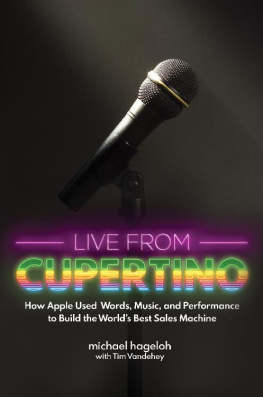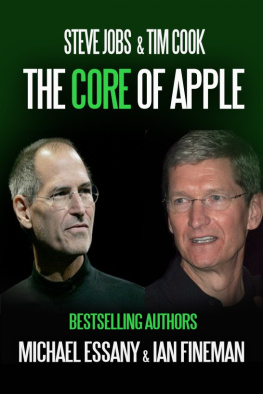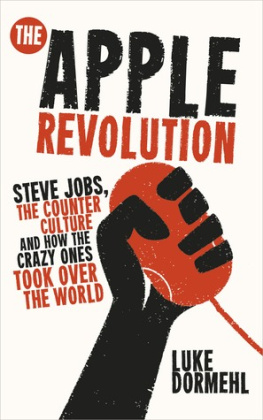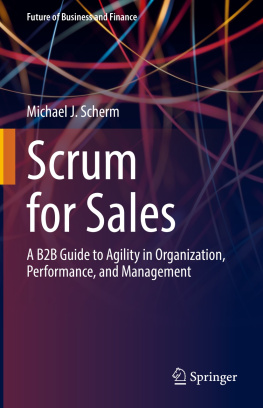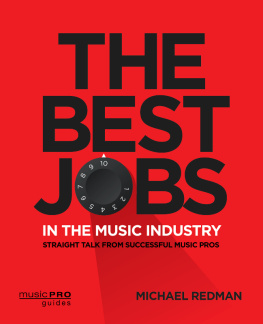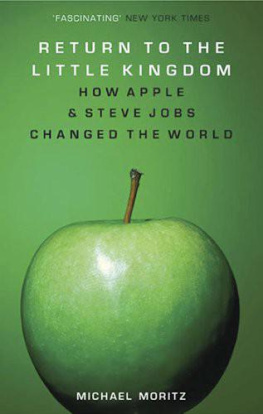A POST HILL PRESS BOOK
ISBN: 978-1-64293-170-9
ISBN (eBook): 978-1-64293-171-6
Live from Cupertino:
How Apple Used Words, Music, and Performance to Build the Worlds Best Sales Machine
2019 by Michael Hageloh with Tim Vandehey
All Rights Reserved
Cover art by Ryan Allen Vincent
Interior design and layout by Sarah Heneghan
This is a work of nonfiction. All people, locations, events, and situationsare portrayed to the best of the authors memory.
No part of this book may be reproduced, stored in a retrieval system, or transmitted by any means without the written permission of the author and publisher.

Post Hill Press
New York Nashville
posthillpress.com
Published in the United States of America
CHAPTER 6
Improvisation
noun
| im-pr-v-z-shn |
The act or art of improvising
Examples:
Charlie Parker (sax), Charlie Musselwhite (harmonica), Jimi Hendrix (guitar)
My greatest closes came when things changed on a dime, and I was able to turn it around by thinking on my feet in the moment. Similarly, some of the greatest moments in the history of music were created in the moment: Jimmy Page on guitar in Led Zeppelins Stairway to Heaven, Neil Peart on drums in Rushs Tom Sawyer, Ronnie Ross on saxophone in Lou Reeds Walk on the Wild Side and, of course, Jimi Hendrixs scorching rendition of The Star Spangled Banner on guitar at Woodstock.
Im not comparing myself to Jimi Hendrix, and heaven knows not to Neil Peart, but Im very much comparing the ability of great sales professionals to the ability of musicians to improvise soaring solos on the fly. As Ive said, the greatest sales training I ever took wasnt meant to be sales training. It was an improvisational theatre class, and I think it was filler because the sales training we were supposed to get didnt show up.
If youve ever watched Whose Line Is It, Anyway? you know about improv theatre. There arent any lines or characters. The person running the improv or someone in the audience suggests a scenariosay, two people standing on the window ledge of a skyscraperand the actors make up the scene as they go. Its a high-wire act thats got a fair amount in common with performing a musical solo in front of an audience.
In one scenario, you stand up knowing that youre going to be making your lines and character up in the moment. In the other, you might know the song and have a chord progression in mind, but youre still creating something spontaneously. No two solos are exactly alike, no matter what the instrument is. You have to be open to whats happening around you and fearless about your choices, and once you play your first note or riff, youre committed. You have to see the improvisation through to its conclusion.
The improvisation that occurs during selling is exactly like playing a drum or guitar solo in front of five hundred screaming people. You might go into the arena with a plan and think youre prepped for anything that could happenyouve anticipated objections and have answers for them all, and youve got a rock-solid pitchand then you get a curveball. Suddenly, the song you thought you were going to play has to change. Youve got to let go of your plan but still apply everything you know, all your artistry, to get the conversation back on track and keep the customer engaged and feeling positive about you. Like everything else about sales, its part training and preparation, part skill and creativity.
The best improvisation isnt actually improvised at all:
There are rules, approaches, and strategies that should guide you even when youre changing things in real time, and the best musicians and sales professionals learn, master, and use them.
So, lets take a closer look at the importance of improvisation in selling the Apple way.
Controlled Freedom
Ive told you how tightly controlled everything was around marketing and messaging within Apple, and thats true. We didnt tie our shoes a different way without approval from Steve Jobs. But there was a big difference between the overarching corporate culture and what we were allowed to do day-to-day as individual account executives. To belabor the point (something Im very good at), you can compare it to a sax solo in jazz. I dont like jazz because Im a fan of melody, and jazz sounds chaotic and un-melodic to my ears, but its the perfect genre of music to capture the idea of controlled freedom.
If you listen to a recording of Charlie Parker or Miles Davis playing a solo on a tune like Hot House or Freddie Freeloader, you might think youre hearing a chaotic mess of random noise (or, as jazz sounds to me, two cats mating in an alley), but if you listen closely, theres structure underneath. No matter how far the soloist strays from the line of the song and from the chords in the original key, he always comes home to that line, led there by the rock-solid notes of the piano and bass. Its freedom with control.
Even though Steve controlled every aspect of Apples corporate culture, we had great freedom to be ourselves when we were out in the field with customers. Steve was our rhythm sectionour piano and bass line playing in the background. But we never needed to check in with anyone or file reports. Steve and the other senior executives knew that because the reborn Apple was about aspiration and emotion, we had to talk to people from the heartnot from some prescribed sales systemor we wouldnt get anywhere. Remember, this was the time before the iPod and iPhone; even after the candy-colored iMac G3s came out in 1998, we were still selling hard into the education market. The era of Dont Apple products sell themselves? hadnt begun yet, not that it ever truly existed.
My problem with sales training to this day is that it imposes structure on something that cant be structured: human interaction. Sales training programs are security blankets for people who either dont have the talent to be in sales or lack the guts to be themselves and the work ethic to learn about their customers and connect with them in ways that matter. Sales solutions teach account executives not to think. Follow the method , they whisper, and youll close the sale . And thats absolute garbage.
Once again, this marks the difference between leaders and managers. Managers spend hundreds of thousands of dollars on sales training programs because its a blanket solution that lets them tell their bosses, Yes, everyones been trained. For the most part, managers are number crunchers. Very few great salespeople go into management; generally, they stay in sales. They know how organic selling is; you cant stamp out the process of creating relationships and reaching agreement with other human beings like its a product on an assembly line.
Leaders, on the other hand, dont need a false sense of security. They know that sometimes, the best thing you can do is set up some guardrails and then turn your people loose. The guy who set up the sales training that ended up being a theater class was a leader who had a professional acting background. He brought to the table a brand of interaction with the customer that wasnt systemic. If you teach your account executives a system and the engagement goes in an unexpected direction, theyre stuck. They end up babbling, right? System-selling robs you of your ability to think on your feet. Improvisation grows it.
But the worst part about system-selling is that it drains all the authenticity out of the encounter. You know what its like when youre on the phone with a customer support person, and you know theyre just walking through a question-and-answer tree? If this, then that, right? You dont feel heard or respected. Thats terrible for building a relationship with your prospect, and today, when they can know as much as you do about your product and price, authenticity is your killer app.
Next page
